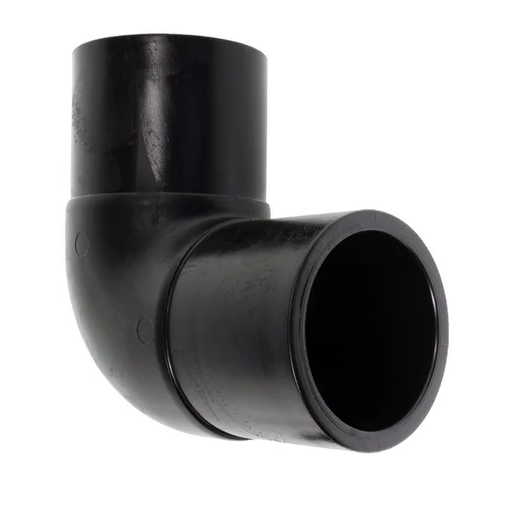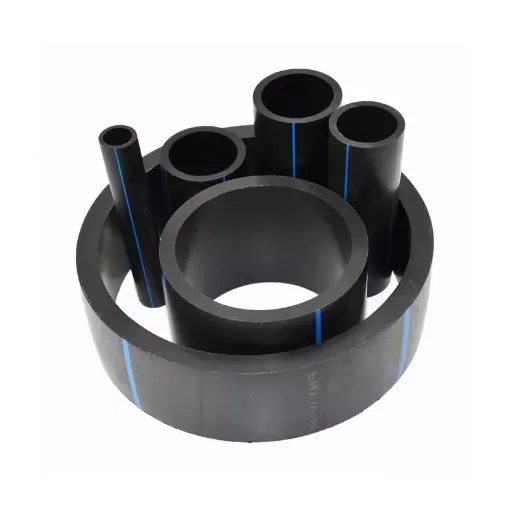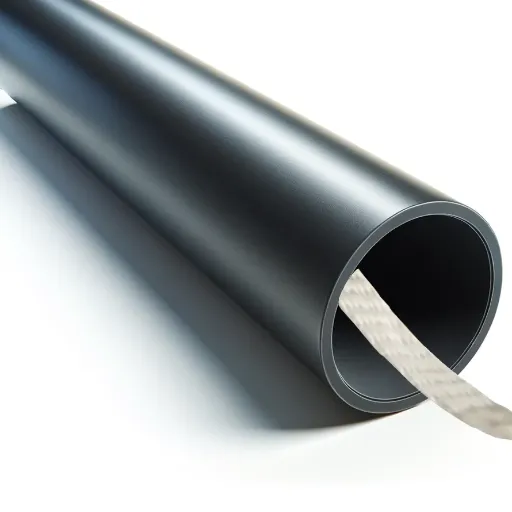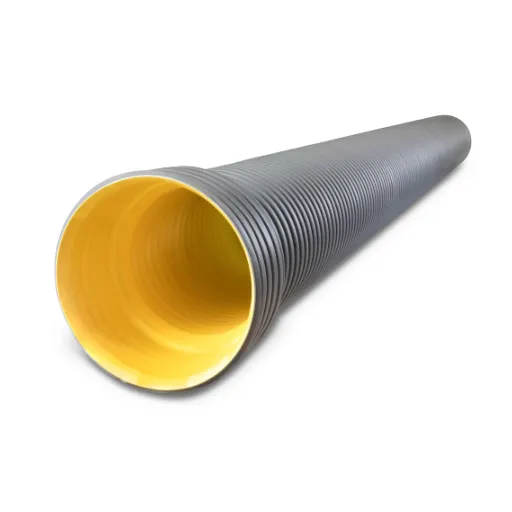High-density polyethylene (HDPE) pipes have become a popular choice in industries ranging from construction to agriculture due to their remarkable flexibility, durability, and resistance to environmental stress. However, understanding how to calculate the proper bend radius for HDPE pipes is a critical factor in ensuring their long-term performance and structural integrity. This calculation not only prevents the risk of pipe damage but also ensures compliance with installation guidelines and engineering standards. In this article, we will explore the key principles and techniques involved in determining the bend radius for HDPE pipes, empowering you with the knowledge to optimize pipe installation while maintaining safety and efficiency in your operations.
What is the Bend Radius for HDPE Pipe?
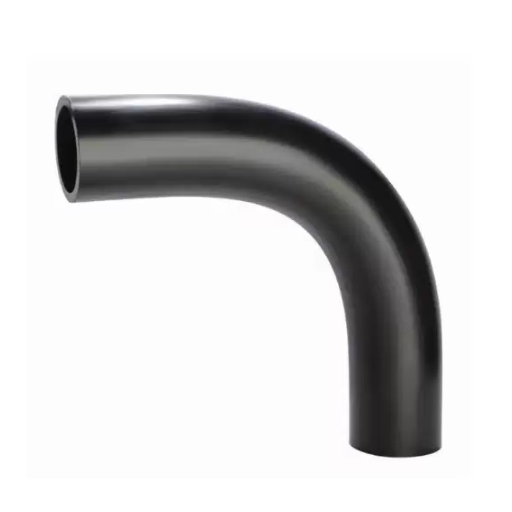
Understanding HDPE Pipe Properties
High-Density Polyethylene, usually shortened to HDPE, has won praise for being lightweight yet incredibly tough. The resin shrugs off chemicals, UV rays, and general wear and tear, so engineers reach for it whenever water, gas, or raw sewage needs a reliable channel. Another perk is the pipe’s featherweight feel- metal and concrete pipes start looking heavy by comparison, the moment you unload a truck. Moving HDPE around a job site rarely requires a muscle-devouring crew.
One design quirk everyone should track is the bend radius, or the point at which bending a pipe might flip from helpful to damaging. For HDPE, kinking starts well after the curve tightens beyond a certain threshold. That threshold is roughly 20 to 25 times the outside diameter, though a designer usually picks a single figure based on internal specifications. Picture a 4-inch OD pipe; the minimum safe arc then lands somewhere between 80 and 100 inches. Back-to-back swag bends may still work, but the long-tail money-saving radius is what the builder wants.
Because HDPE pipes stay strong yet flexible, crews can slide them into rocky hillsides or twist them around sharp corners without worrying that the walls will buckle. Go beyond the factory-suggested bend radius, though, and you risk cracking the pipe- bad news for any job. Double-check the data sheet the maker supplies before you bend anything; it lists the exact radius you’ll need to stick to for trouble-free installation.
Factors Affecting Bend Radius
Several critical factors determine the bend radius of HDPE pipes, directly influencing their performance and safety during installation.
- Diameter and Wall Thickness: The bigger the diameter and the thicker the wall, the stiffer the pipe becomes. That stiff quality pushes the minimum bend radius higher and farther from the installer’s comfort zone. No one should try to eyeball this; the specs booklet is the final authority.
- Temperature: Temperature significantly affects the flexibility of HDPE material. Higher temperatures increase flexibility, allowing for a tighter bend radius, while colder conditions reduce pipe pliability, requiring a more extended bend radius to prevent damage. It’s crucial to account for the ambient and operational temperatures during planning.
- Installation Method and Jobsite Conditions: How the installer bends the pipe is almost as important as the pipe itself. Dragging a length through boulders can turn a slight kink into a fracture if the bend is tighter than the minder’s radar. Following the recommended radius in messy terrain buys peace of mind.
By evaluating these factors and adhering to manufacturer guidelines, you can ensure safe and effective pipe installation while avoiding costly repairs or failures.
Applications of Pipe Bending in Construction
Pipe bending sits at the heart of today’s building trades, letting workers shape metal and plastic into just about any curve they need. You spot bent pipes everywhere, from the plumbing risers in an apartment to the HVAC runs snaking above a warehouse floor. A single sweep usually beats stacking up extra elbows, so the bend tightens the whole assembly and cuts down the places leaks can start.
Big jobs like bridges or subway tunnels lean on bends more than anyone cares to count. The curves sneak utility lines around piping headaches that would stop a flat segment cold. Tight footprints in crowded cities love that sort of trick because every inch suddenly matters.
It shrinks when crews roll out a bend, since the cut-offs are smaller and lighter alloys take the stress without breaking. Less scrap and smarter materials add up the same way an extra solar panel does, quietly boosting a project’s green edge.
How to Calculate the Bend Radius for HDPE Pipe?
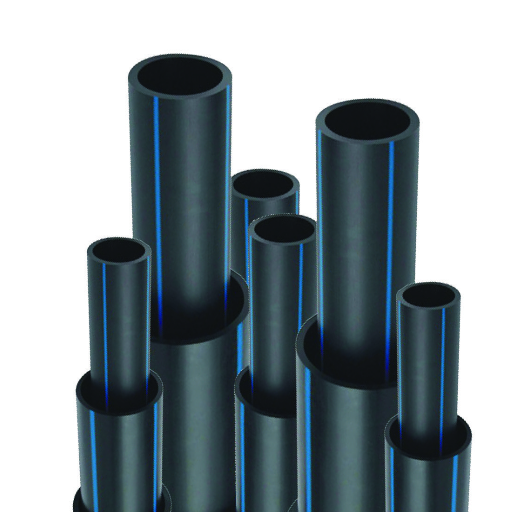
Importance of Pipe Diameter in Calculations
The diameter of a pipe is more than a simple measurement; it is the cornerstone of any bend-radius calculation in high-density polyethylene systems. When the pipe is forced to curve, its width directly determines both its pliability and the strength that remains after the yield point is reached. A wider section, by its greater mass, demands a correspondingly broad arc to fend off serious risks such as warping or outright fracture. Narrower tubes, in contrast, bend into tighter circles almost by instinct because the material under stress occupies less area.
Guidelines often set that multiple between 20 and 25 times the O.D., a rule rooted in the need to preserve the pipe’s pressure-bearing capacity long after installation. Straying below that benchmark can invite hidden failures that are expensive to trace.
When combined with calculated flow-rate requirements and project-specific environmental factors, understanding the pipe diameter becomes crucial to ensuring optimal pipe performance while minimizing material waste. Data-driven decisions based on diameter considerations can lead to more precise designs and efficient resource utilization in modern piping projects.
Avoiding Kinking and Degradation
Long-lasting performance in a piping system hinges on two often-neglected details: kinking and material degradation. A kink usually happens when the bend radius falls under the minimum threshold, and that single overshoot can choke flow, create sharp stress risers, and eventually crack or leak. Factory specs hold the line, but installers should also factor in climate swings and pressure jumps at the job site.
Degradation unfolds more grimly when pipes face acids, UV light, or constant abrasion; the wall silently thins long before any drip appears. Engineers who match thermoplastic, duplex alloy, or lined steel to the field condition buy themselves time, yet even the right choice can fail without sound hangers and routine checks.
Merging contemporary modeling platforms with rigorous data analysis invariably deepens the quality of decision-making, whether in a laboratory or on an active work site. A single computational run can trace how stress coursed through a structure, isolate vulnerable zones, and hand engineers the warning they need to avert costly breakdowns.
What is the Minimum Bend Radius for HDPE Pipes?
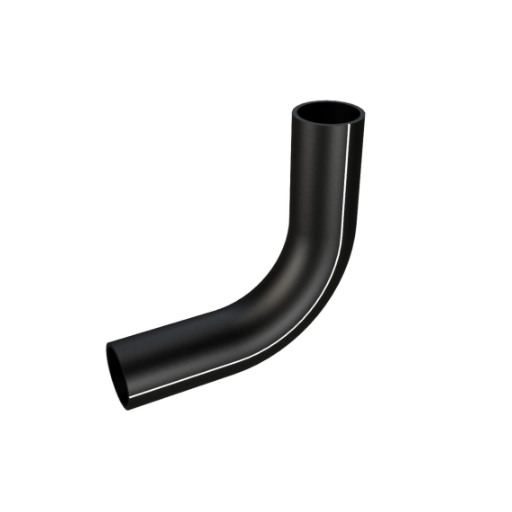
Impact of Wall Thickness on Bend Radius
A polyethylene pipe’s wall thickness offers immediate practical advice when crews decide how tightly the section may be curved in the trench. Thicker walls invariably boost the material’s strength, helping it resist bulges and kinks when workers haul the line into place and again when hydraulic pressure fills it.
- Stress Distribution: That increase in stoutness tends to level out the internal stresses a pipe sees during bending, an effect many engineers still describe using stress concentration maps even when computers draw the charts for them.
- Flexural Modulus Dependence: Higher flexural modulus follows thicker walls as night follows day; the stiffness keeps unwanted bends under control and stops pipes from drooping after installation.
- Reduction in Ovality: During bending, thicker walls mitigate the risk of pipe ovality, which occurs when the cross-section of the pipe becomes distorted from its original circular shape.
- Multiplier Variation by Diameter: Industry handbooks adjust the minimum bend-radius rule-of-thumb, commonly set at 20 times the outer diameter, and sometimes nudged to 25 times for heavier pipes that carry more pressure.
- Temperature Sensitivity: Thermal sensitivity hinges on wall thickness; a hefty profile can fortify the pipe against the flexing strains that heat fluctuations induce.
Careful attention to the relevant variables remains essential when selecting high-density polyethylene pipe for projects that demand sharp bends. Getting those particulars right minimizes the risk of overstressing the resin and helps the line deliver dependable service over the long haul.
Ensuring Structural Integrity in Pipe Bending
Maintaining the structural integrity of high-density polyethylene (HDPE) pipe during bending demands close examination of several interdependent variables. Pipe diameter, wall thickness, selected material grade, and curvature radius exert direct pressure on the resin, so each must be measured before deployment to forestall immediate deformation or fatigue and to ensure acceptable long-term performance.
- Critical Minimum Bending Radius
Among these criteria, the minimum bending radius (MBR) emerges as a central design constraint. Manufacturers usually prescribe a curve of 20 to 25 times the outer diameter; anything tighter invites hidden microcracks, obvious creep, or catastrophic failure as loading continues.
- Thermal Expansion Impacts
Temperature introduces a second challenge because HDPE expands and contracts more than steel or concrete. If the bending occurs at a cooler site and then sees warmer operating conditions, longitudinal strain can increase, buckle joints, or open new leak paths. In such scenarios, fittings called thermal anchors or sliding compensators allow for movement while keeping joints sealed.
- Material Grade Suitability
HDPE resin is far from uniform; different grades give pipe bends their distinctive personality. Engineers often steer toward the heftier PE4710 or PE100, where relentless pressure and sharp angles collide. Those denser formulas shrug off stress corrosion and keep bending without breaking, even when temperatures misbehave.
- Inspection and Testing Measures
Ultrasonic sweeps and hydrostatic pumps stay ahead of trouble by spotting hairline cracks long before they grow. Such non-destructive checks become indispensable once the pipe disappears underground. Collected numbers, not guesses, drive timely repairs and stretch the lifespan of buried sections.
Picking the right resin and scheduling deliberate tests can turn a headache into routine infrastructure. Skip those choices, and unexpected failures soon convert savings into expensive replumbs.
Long-term Bend Radius for HDPE Pipe
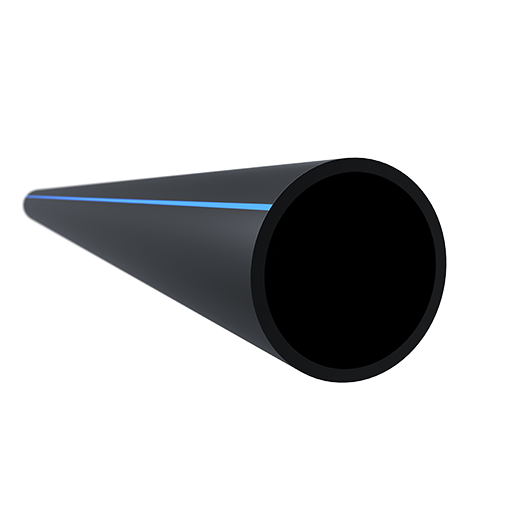
Significance of Long-term Bend Radius
The long-term bend radius of HDPE pipe directly affects how well the line holds up over the years. Engineers look for a specific curve that the material can handle without stretching, cracking, or flat-out failing.
Keep the pipe bent tighter than that radius for too long, and creep starts to kick in. Suddenly, the plastic wants to stay stretched and may never bounce back. Heat, heavy loads, and the way you install the run all squeeze or loosen those bending rules. Warm air, for example, can turn stiff HDPE into something much bendier, so smart crews bump the minimum radius up when the thermometer climbs.
Following the recommended bend radius is a must when pipes face constant flex or regular heat shifts. Research showed that stepping past the guideline radius by only 20 percent can cut a line’s lifespan in half, so designers can’t guess. Modern modeling software and finite-element tricks let crews tailor radius numbers to local quirks, helping the system stay trouble-free for years.
Maintaining Pipe’s Structural Integrity Over Time
Keeping piping systems in one piece for the long haul means following the right engineering rules and doing smart maintenance. The materials we pick, from sturdy alloys to tough reinforced polymers, have to perform reliably when hit with heat, pressure, and nasty chemicals. Predictable behavior under stress is no longer optional; it’s now a baseline expectation.
Recent surveys show that over 30 percent of pipeline breaks happen because tiny stress cracks are spotted too late. Those small flaws grow fast once the load cycles keep coming, so catching them early is critical. Enter condition-monitoring tech like distributed acoustic sensing and fiber-optic runs along the line; these gadgets flag strain shifts on the fly and steer operators away from disaster.
Routine non-destructive tests-round after round of ultrasonic sweeps, maybe a radiographic look now and then-should sit at the heart of any checklist. They sniff out hairline fractures or thinning walls that often slip past the naked eye until it’s panic time. By marrying fresh inspection data with AI forecasts, crews can keep the system tougher, cheaper, and legally in the clear. That combination of early action and smart tech trims downtime, slashes life-cycle costs, and still meets the tightest rules on the books.
Common Issues with Pipe Bending and How to Avoid Them
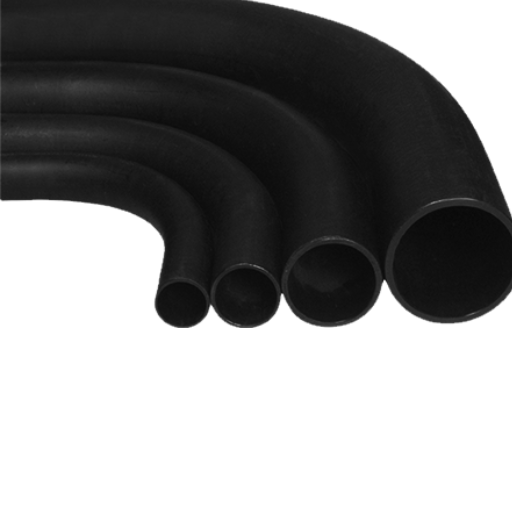
Identifying Corrosion and Degradation
Corrosion is often Public Enemy Number One for industrial piping. Give steel enough moisture, air, or nasty chemicals, and you soon see rough spots, cracks, and places where the wall has just quit. Heat, a swinging pH, or high pressure only speed up the ugly show. Finding those thin spots and pits isn’t easy, so crews mix eyeball checks, ultrasonic scans, and chemical sniff tests to catch the damage before it grows.
Tools like magnetic flux leakage and eddy-current scans poke at the metal without leaving a scratch. These methods even notice rust hiding under insulation or erosion that starts inside a pipe. Newer tricks, such as computed radiography, pull sharp images from corners nobody could reach before, letting engineers watch wear patterns evolve from inspection to inspection.
Preventive upkeep paired with AI-powered predictive modeling has turned into a game-changer for fighting rust and wear. By looking at live data and applying smart analytics, maintenance crews can spot trouble spots and fix them long before anything breaks. Installing IoT sensors lets operators track temperature, humidity, and pressure around the clock, numbers whisper where corrosion is creeping in.
Preventing Bending to a Tighter Radius Problems
Bending pipe or tubing too sharply is a classic rookie mistake. Go past the minimum bend radius and you risk serious trouble-cracking, thinning, or even a full structural failure. Sticking to the guidelines from ASTM or ASME is more than just red tape; it’s common sense for keeping your system safe.
To understand what happens when you crank the bend, some shops fire up finite-element analysis (FEA). That software shows exactly where the metal is about to stretch or pinch, so engineers can tweak the tooling before anything is built. Pair that insight with high-tech benders that feed back real-time numbers, and it becomes a lot easier to hold tight tolerances.
The choice of material makes a big difference, too. Pipes made from annealed stainless or certain aluminum alloys bend beautifully because those metals stay ductile under pressure. Combine smart materials, advanced modeling, and precise machinery, and you cut the odds of failure while speeding up the whole fabrication process.
Using Proper Pipe Fittings and Techniques
Good pipe fittings aren’t just a nice extra; they’re the backbone of any reliable tube system, whether you’re in oil and gas or water treatment. Picking the right piece means knowing what your pipes are made of, how much pressure they’ll handle, and what else is flowing through them. Threaded fittings are a go-to for light service because you can spin them on by hand, but welds steal the show under high pressure thanks to that rock-solid, leak-proof bond.
Sealing isn’t stuck in the Old World of teflon tape; today, you can reach for EPDM or Viton rings that shrug off heat and nasty chemicals alike. Even the slickest seal won’t save you if the pipe is out of line, because that twist invites fatigue cracks that cut the whole system’s life.
Laser calipers and pocket-sized ultrasonic testers let crews check dimensions to within a hair and catch pinholes before anyone else sees them. Slapping those modern tricks onto tried-and-true knowledge keeps plants running, slices downtime, and ticks every box on the industry compliance list.
References
Frequently Asked Questions (FAQ)
Q: What is the minimum bend radius of HDPE pipe, and why is it important?
A: The minimum bend radius of HDPE pipe is the smallest radius the pipe can be bent without causing damage or compromising its integrity. It is crucial for ensuring the pipe’s resistance to kinking and ensuring a successful installation, especially in applications like trenchless installations and directional drilling.
Q: How do you calculate the minimum bend radius for PE pipe?
A: To calculate the minimum bend radius for PE pipe, you typically use the formula: Minimum Bend Radius = (pipe’s outer diameter) x Dimension Ratio (DR). This helps determine how much the pipe can be bent during handling and installation without damaging it.
Q: What factors affect the allowable bend radius of HDPE piping systems?
A: Factors affecting the allowable bend radius of HDPE piping systems include the pipe’s outside diameter, dimension ratio, tensile strength, and the specific HDPE material properties. These factors determine how much the pipe can be bent to a radius without damage.
Q: Why is the minimum long-term bend radius significant in HDPE applications?
A: The minimum long-term bend radius is significant because it considers the pipe’s ability to maintain its integrity over an extended period under bending stress. This is important for applications like water distribution and sewer systems, where the pipe may be subject to continuous external pressures.
Q: Can HDPE pipe be bent during installation without causing damage?
A: Yes, HDPE pipe can be bent during installation within its minimum allowable bend radius to avoid obstacles or follow a bore path. However, bending beyond this limit can lead to kinking and potential failure.
Q: How does pipe size affect the minimum bend radius of HDPE pipes?
A: Larger diameter HDPE pipes typically have a larger minimum bend radius due to their increased stiffness and resistance to bending. The pipe size directly impacts the calculation of the minimum bend radius, affecting how the pipe can be installed in various applications.
Q: What role does directional drilling play in determining the bend radius of HDPE pipes?
A: In directional drilling, the minimum bend radius of HDPE pipes is critical to ensure the pipes can follow the drilled path without damage. Proper calculation helps in reducing installation costs and ensuring the HDPE piping system’s durability.
Q: How do you ensure the successful installation of HDPE pipes concerning the bend radius?
A: To ensure successful installation, it’s essential to adhere to the calculated minimum bend radius, handle the pipes according to manufacturer guidelines, and use the appropriate pulling force during installation to avoid damaging the pipes.
Q: What are the consequences of bending HDPE pipes beyond their allowable radius?
A: Bending HDPE pipes beyond their allowable radius can lead to kinking, increased stress, and potential pipe failure. This compromises the integrity of the system and can lead to costly repairs and downtime.



